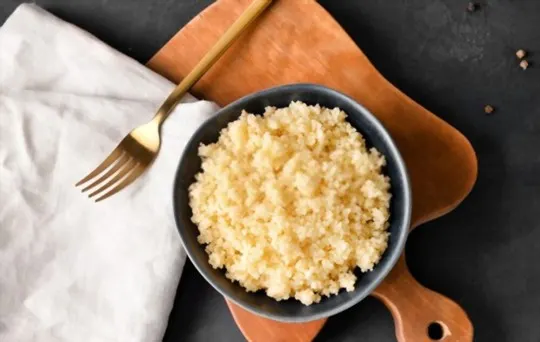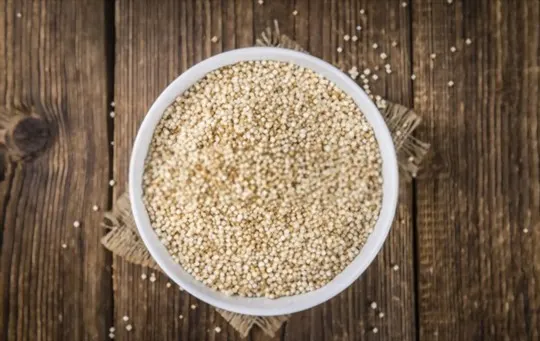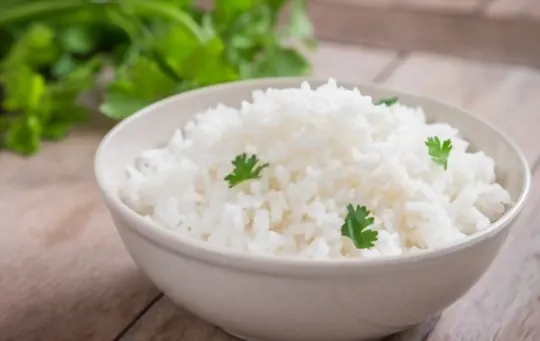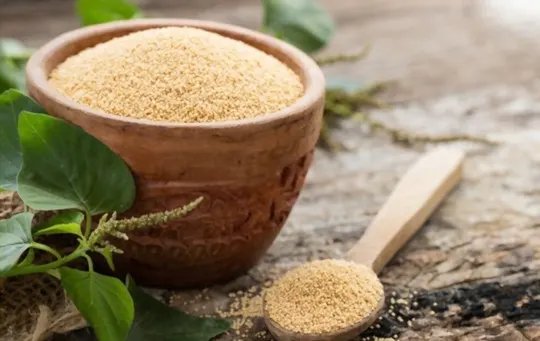Finding the perfect substitute for millet can feel like a culinary quest.
Sometimes, you just can’t snag millet at your local grocery, or maybe you’re aiming to shake things up a bit in the kitchen.
We get it, and we’re here to help with some top-notch swaps.
Quinoa packs a punch as a protein-rich alternative, making it a fantastic pick for health enthusiasts.
Couscous comes in clutch for those quick, fluffy sides, ready in minutes and just as versatile.
Rice, in its many forms, offers a familiar base that pairs with nearly anything you’ve got planned.
With these options, you’re set to keep your meals interesting and your pantry prepared.
After all, variety is the spice of life, and we’re all about keeping it spicy and simple in the kitchen.
Stick with us, and you’ll master these swaps in no time.
The 5 Best Substitutes for Millet
If you’re looking for a gluten-free grain to add to your diet, millet is a great option.
This ancient grain is packed with nutrients and has a mild, nutty flavor that goes well with a variety of dishes.
However, if you can’t find millet or you’re simply looking for something different, there are several other grains that make excellent substitutes.
1 – Couscous

Couscous is a type of pasta made from semolina flour.
It originated in North Africa and is a staple in Moroccan cuisine.
Couscous is small and round and has a slightly chewy texture.
It can be flavored with spices or herbs and is often served with vegetables and meat.
Couscous makes a great substitute for millet.
It has a similar appearance and texture, but couscous is more versatile in terms of flavor.
You can use couscous in any dish that calls for millet, or you can try it in new recipes to add a unique twist.
2 – Quinoa

With its nutty flavor and chewy texture, quinoa is a versatile grain that can be used in a variety of dishes.
It is available in a range of colors, including white, red, and black.
Quinoa is a good source of fiber and protein, making it a nutritious option for those looking for a healthier alternative to rice or pasta.
When cooked, quinoa has a light, fluffy texture.
It can be used as a side dish or as an ingredient in salads, soups, or stews.
Quinoa is also a good option for those who are gluten-free.
If you’re looking for something different to try, consider substituting quinoa for millet in your next recipe.
3 – Rice

Rice is a staple food in many cultures and has a long history of cultivation.
It is grass that is grown in warm, wet climates and is harvested for its grain.
Rice plants come in wide different varieties, and the grain can be either white or brown.
The taste and texture of rice can vary depending on the variety, but it is generally considered to be a mild, neutral-tasting grain.
When cooked, rice is fluffy and tender. It can be used as a side dish or an ingredient in recipes.
Substituting rice for millet can add variety to your diet and provide you with essential nutrients.
4 – Buckwheat

Native to Southeast Asia, buckwheat is a small, triangular grain that has been a staple in the diets of many cultures for centuries.
Unlike other grains, buckwheat is not a member of the grass family.
It is actually a flowering plant that belongs to the same family as rhubarb and sorrel.
Buckwheat can be found in three forms: unhulled kernels (also known as groats), hulled kernels (also known as kasha), and flour.
The hulled variety is the most common form found in grocery stores.
Buckwheat has a slightly nutty flavor and is often used in savory dishes such as soba noodles and kasha.
It can also be cooked and eaten like rice or used to make porridge.
When ground into flour, it can be used to make pancakes, crepes, and bakery goods.
Buckwheat flour is also gluten-free, making it a good option for those with celiac disease or gluten sensitivity.
Because of its hearty flavor and versatility, buckwheat makes an excellent substitute for millet in many recipes.
5 – Amaranth

Amaranth is a plant that is native to South America.
It was a staple food of the Aztecs, and it is still eaten today in many parts of Mexico.
The amaranth plant can grow to be up to six feet tall, and it has small, greenish-colored flowers.
The edible part of the plant is the grain, which can be ground into flour or used whole.
Amaranth has a nutty flavor, and it is often used in porridge or as a replacement for rice or other grains.
It is also a good source of protein and fiber.
Because of its nutritional value, amaranth can be a healthy substitute for other grains such as millet.

Leave a comment